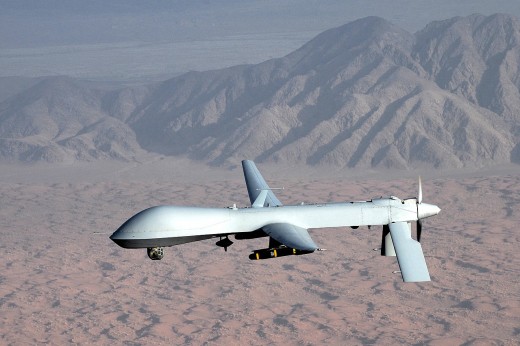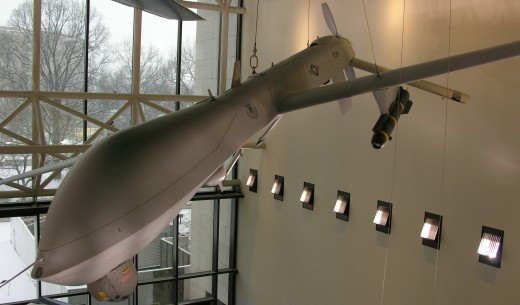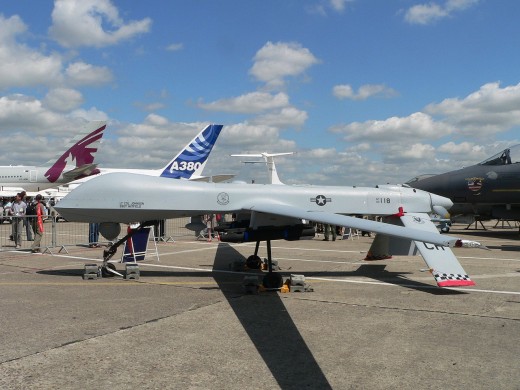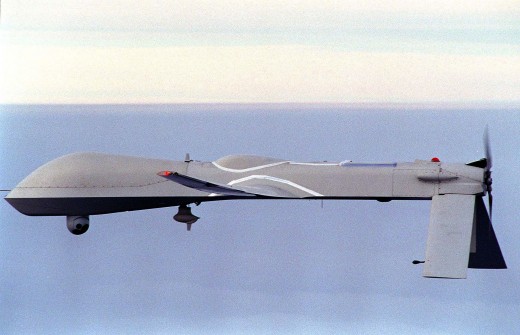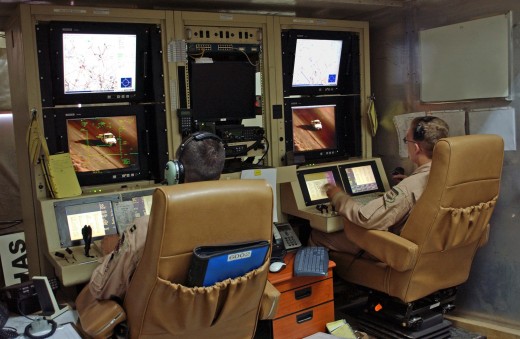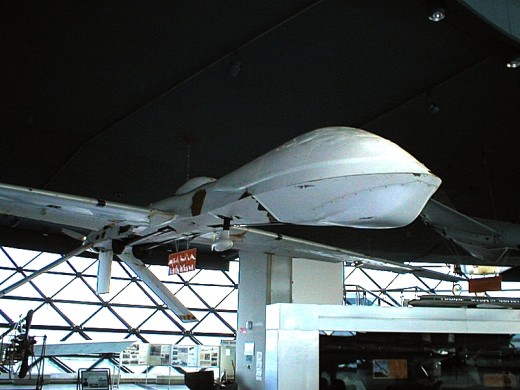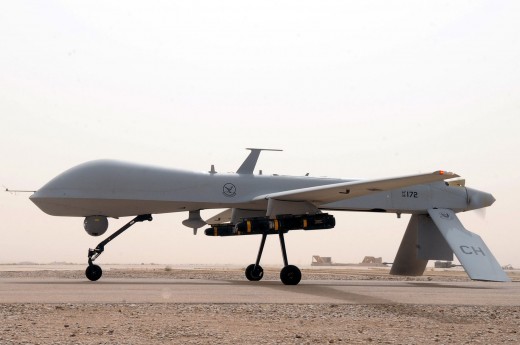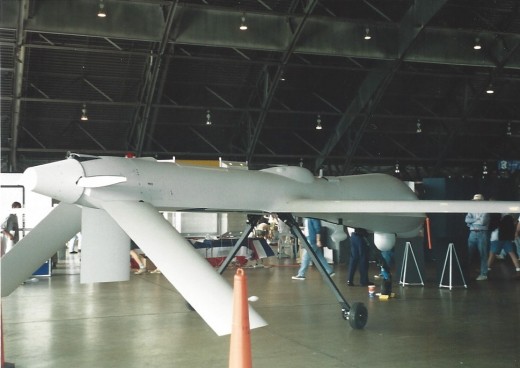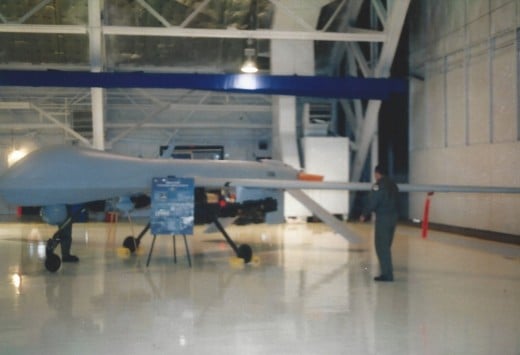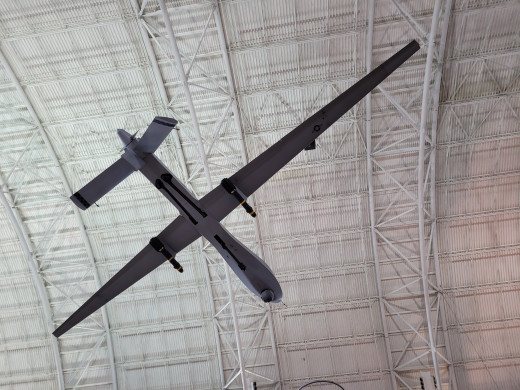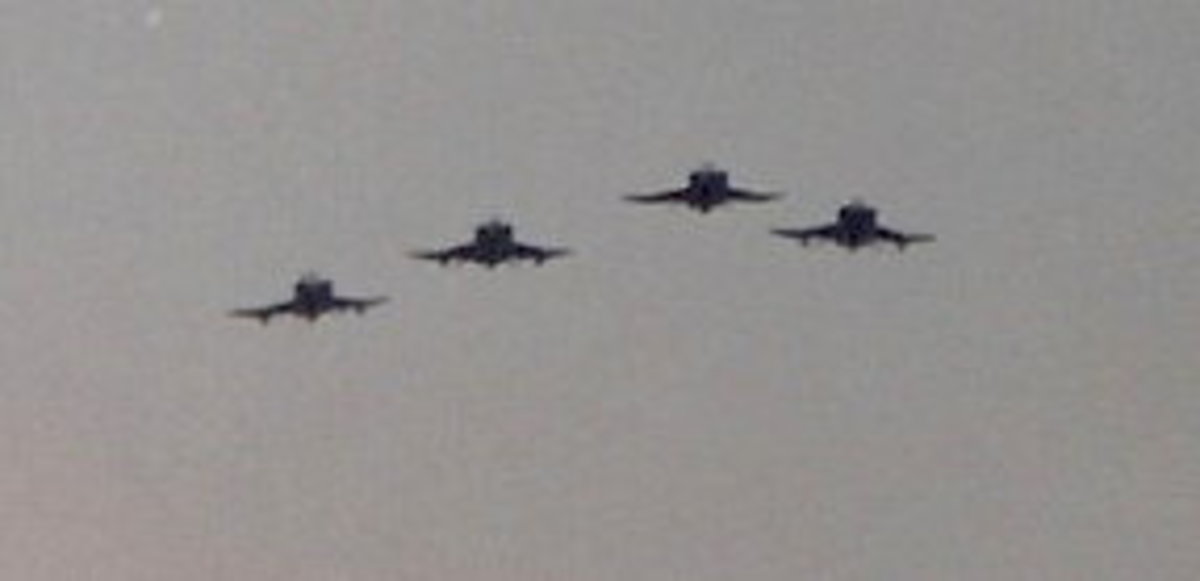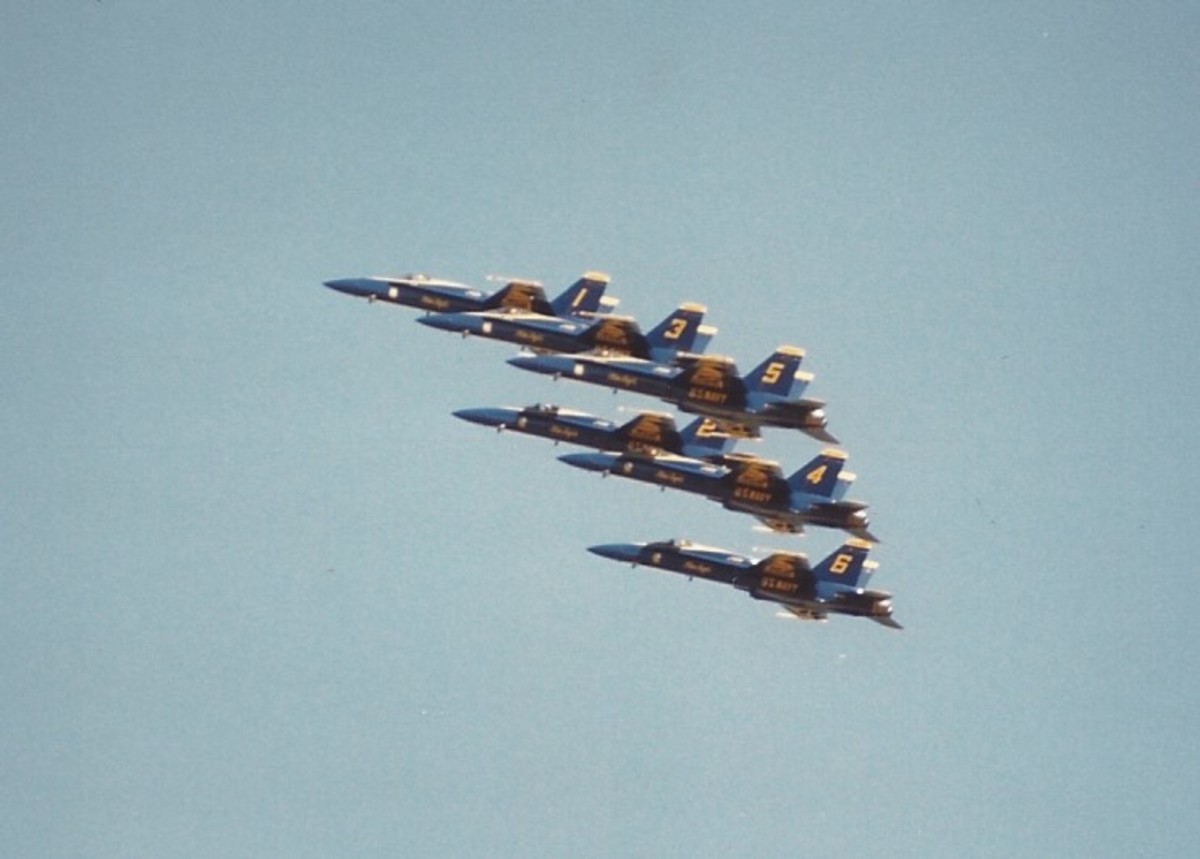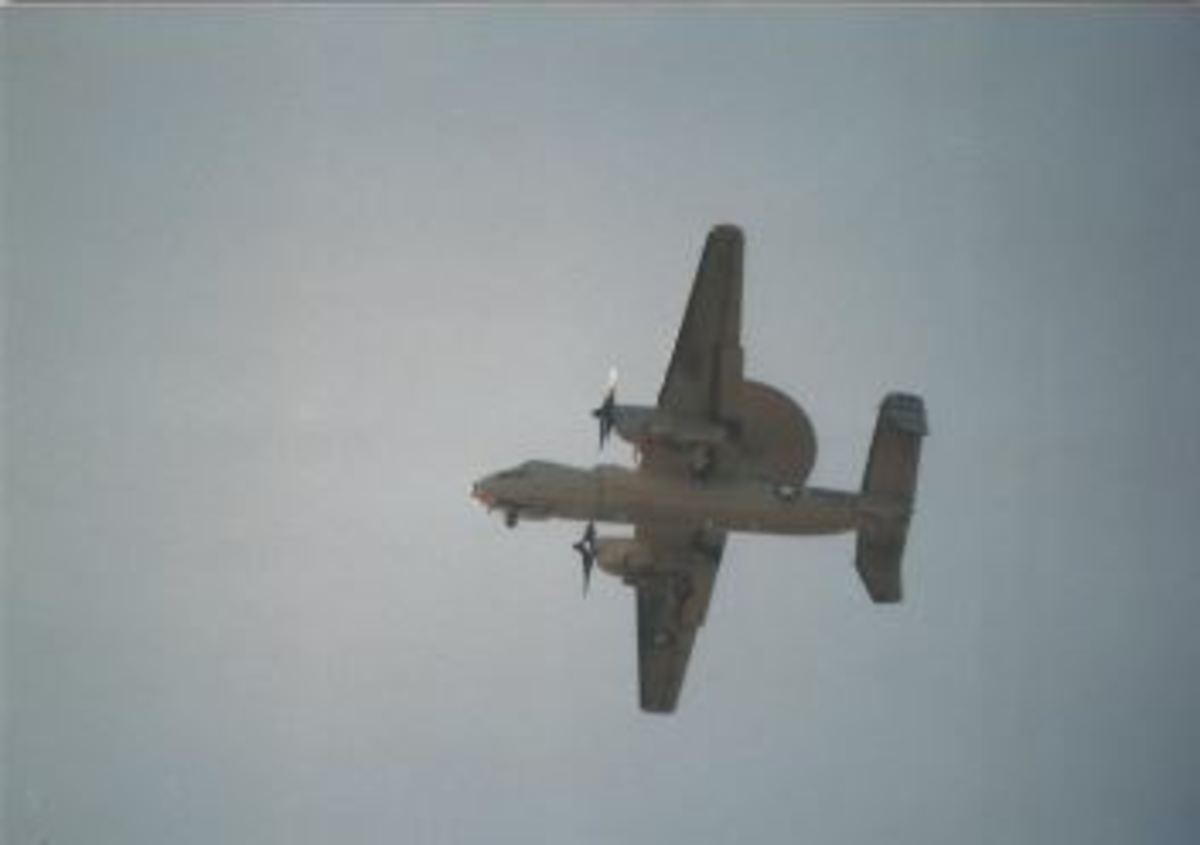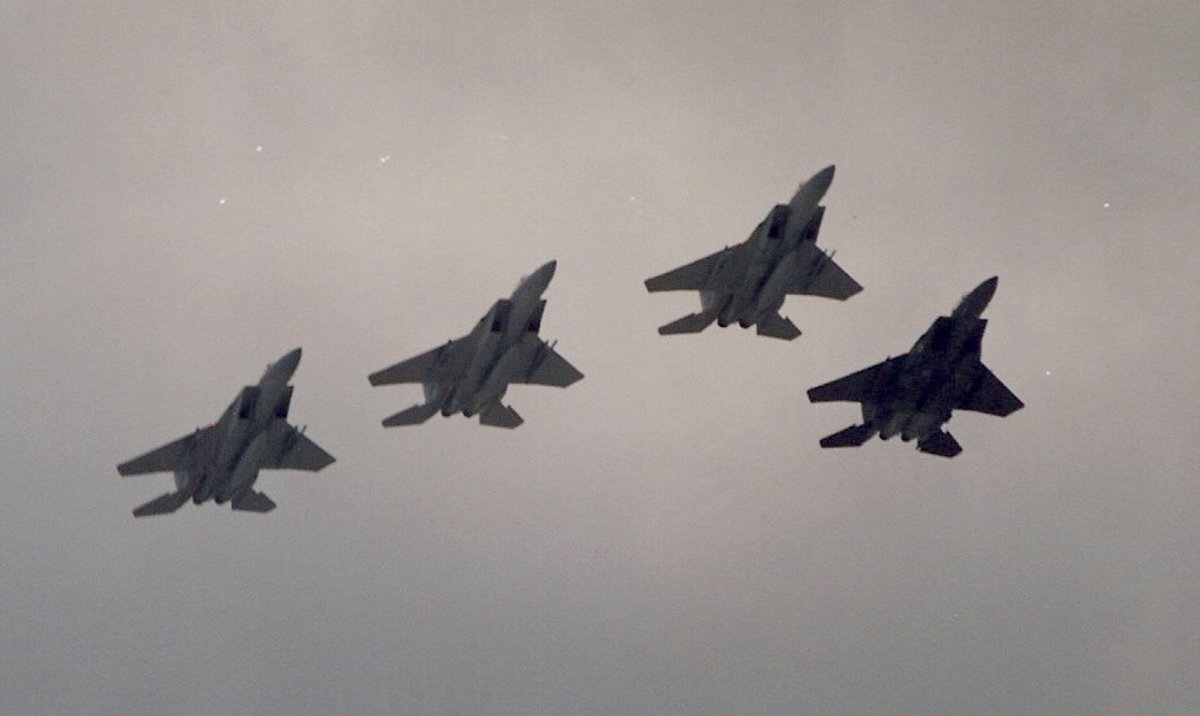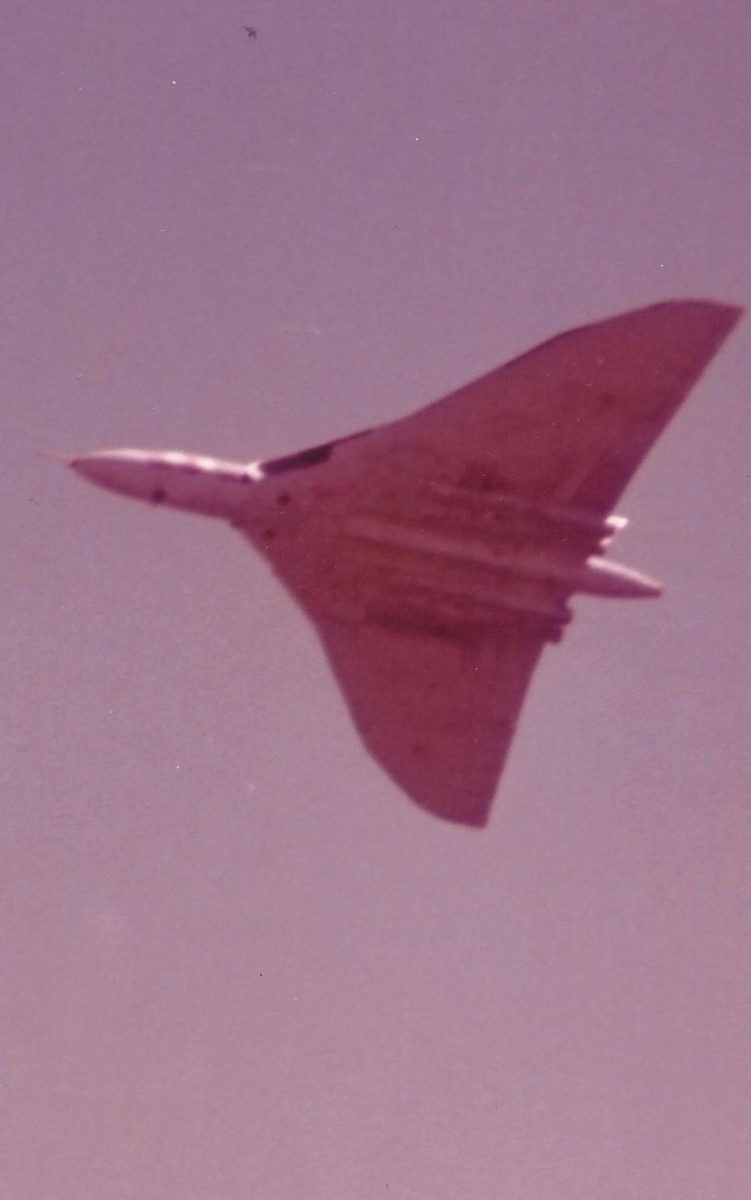- HubPages»
- Education and Science»
- History & Archaeology»
- Military History
Predator, The UAV Not the Alien










Background
The Predator is an unmanned aerial vehicle. The Predator has a pilot but the pilot is not in the aircraft. The pilot can be, and often is, on the other side of the world when the Predator is flying. The Israeli Defense Force success with unmanned aerial vehicles for reconnaissance and target acquisition in the 1980s convinced the United States of the usefulness of small, unmanned, propeller driven aircraft. In April 1996 Secretary of Defense William J. Perry selected the U.S. Air Force as the operating service for the RQ-1 Predator.[i] The “R” in the designation stands for reconnaissance, the “Q” indicates it’s a remotely piloted aircraft, and the 1 indicates it is the first in the series of remotely piloted aircraft. The Department of Defense changed the Predator’s designation to MQ-1 in 2002. This is when the Predator was equipped with AGM-114 Hellfire missiles. This meant the Predator could not only acquire and track targets, it could also attack targets.
[i] USAF Fact Sheet, MQ-1B Predator, http://www.af.mil/About-Us/Fact-Sheets/Display/Article/104469/mq-1b-predator, last accessed 11/11/17.
The Balkans
The Predator’s first combat deployment was July-November 1995 in the Balkans. Civilian contractors flew these missions. This deployment involved 4 Predators. On August 11, 1995 a Predator crashed in Bosnia. This was followed by a Predator suffering engine failure that may have been cause by ground fire on August 14. This aircraft was destroyed so it wouldn’t fall into enemy hands. The Predator was again deployed in the Balkans in March 1996.
On March 24, 1999 NATO began an air campaign against Yugoslavia. The U.S. named this campaign “Operation Allied Force”. Predators flew missions in this campaign. Its first loss occurred on April 18, 1999 when a fuel system malfunction and icing caused a Predator, serial number 95-3017, to crash. A Yugoslavian SA-9 Strela (Arrow)[i] shot down a Predator, serial number 95-3019, on May 13, 1999. Yugoslavian ground fire shot down another Predator, serial number 95-3021, on May 20, 1999. The Museum of Aviation in Belgrade has one of these shot down Predators on display.[ii] During “Operation Allied Force” Predator’s missions included verifying targets and confirming their destruction. Among these targets were tanks and other military vehicles, and surface-to-air missile systems. Predators also monitored refugee movements. After the NATO victory Predators monitored Yugoslavian troop withdrawals from Kosovo.
[i] The NATO code name for the SA-9 is “Gaskin”.
[ii] Museum of Aviation web site, http://muzejvazduhoplovstva.org.rs, last accessed 11/12/2017.
Iraq Before Iraqi Freedom
Predators also flew missions during operations “Northern Watch” and “Southern Watch”. An Iraqi fired a surface-to-air missile (SAM) at a Predator in May, 2001. On August 4, 2001 two MiG-23s flew 60 miles (100 kilometers) inside the “no-fly” zone. A Predator was in the area. On August 27, 2001 an Iraqi SAM shot down a Predator. The Iraqis shot down another Predator on September 11, 2001. SAMs claimed another Predator on October 10. Four days later an Iraqi Roland fired a SAM at a Predator. The USAF fitted Predators with AIM-92, an air-to-air version of the Stinger missile. On December 23, 2002 a USAF Predator and an Iraqi Air Force MiG-25 fired missiles at each other. The Predator missed, the MiG-25’s missile shot down the Predator.
Afghanistan
On September 7, 2000 a Predator flew the first mission over Afghanistan in a joint CIA-DoD effort to locate Osama bin Laden. Predators flew 15 more such flights. They probably spotted bin Laden on two of these missions. The winter weather forced the U.S. to suspend these flights.
The USAF lost its first RQ-1 during Operation Enduring Freedom on November 2, 2001. USAF and RAF Predators flew missions during Operation Enduring Freedom.[i] On one mission a Predator took pictures of Taliban leader Mohammed Omar and his car’s license plate. These pictures were used on propaganda leaflets. Predators provided real time intelligence to AC-130 gunships in the Tora Bora operation. During “Operation Anaconda” Predators spotted al-Qaeda troops reinforcing their surrounded troops. The US Military allowed the al-Qaeda reinforcements to enter a trap. On January 3, 2002 Predators discovered activity at al-Qaeda’s Zawar Kili camp. The U.S. dropped 100 2,000pound bombs on the camp. CIA controlled Predators also carried out missions including firing Hellfire missiles on Afghan warlord Gulbuddin Hekmatyar’s troops. On August 31, 2006 Predators participated in the search and recovery of a crashed Royal Netherlands Air Force RNAF F-16[ii]. In 2009 Taliban hackers exposed one of the disadvantages of unmanned aerial vehicles. They hacked into a USAF Predator’s live video feed.
[i] RAF Predators flew at least 34,750 hours and fired at least 281 missiles in Afghanistan.
[ii] The F-16 pilot, Kapitein-Vlieger Michael 'Safac' Donkervourt, died in the crash.
Operation Enduring Freedom to the present
The USAF used some older Predators as “bait” for the Iraqi air defenses. On April 12, 2004 a Predator team successfully engaged insurgents and called in an F-16 close air support strike. On May 27, 2005 a predator team provided full-motion surveillance of the area during a search-and-recovery of the pilots killed in an OH-58 shootdown[i]. In June 2006 Predators carried out search operations for two missing soldiers.[ii] On December 19, 2001 Predators flew mission in support of Turkeys operations against PKK terrorists in Northern Iraq.
Syrian air defenses shot down a Predator over Syria on March 17, 2015. From January 2016-July 2017 the 361st Expeditionary Attack Squadron Predators fired 358 AGM-114 missiles against ISIS targets. The 361st Predators flew 2,000 combat missions and logged 36,000 combat hours during this period.
[i] The OH-58 pilots were CW4 Matthew Scott Lourey & CW2 Joshua Michael Scott.
[ii] The solders, Pfc. Kristian Menchaca & Pfc. Thomas L. Tucker were captured alive then murdered.
Other Operations
Predators flew their first missions against Libyan government forces on April 23, 2011. A Predator assisted in stopping Muammar Gaddafi’s convoy. The rebels captured and summarily executed Gaddafi. On September 11, 2012 two Predators provided real time imagery during the attack on the U.S. Embassy in Benghazi. On November 1, 2012 a Predator survived an attack by two Iranian Su-25 Grach (Rook)[i] attack aircraft.
Predators have been patrolling the U.S. northern and southern border. A Predator flying for the U.S. Border Patrol crashed in Nevada on April, 26, 2006. Predators have supported humanitarian operations, including Haitian relief operations in January 2010. In September 2013 California Air National Guard Predators supported fire suppression efforts at Yosemite National Park.[ii]
In August 2011 the Predator passed the 1 million flying hours milestone. The USAF announced plans to retire the Predator in 2018. While this would mark the end of the Predator in the USAF Predators will continue operations for other organizations.
[i] The NATO code name for the Su-25 is “Frogfoot”.
[ii] California ANG deploys Predator to support firefighters, http://www.af.mil/News/Article-Display/Article/467010/california-ang-deploys-predator-to-support-firefighters, last accessed 11/12/2017.
Thrust
| 115hp
|
Payload
| 450 pounds (204 kilograms)
|
Speed
| cruise speed around 84 mph (70 knots), up to 135 mph
|
Ceiling
| 25,000 feet (7,620 meters)
|
Armament
| two laser-guided AGM-114 Hellfire missiles
|
Crew (remote)
| two (pilot and sensor operator)
|
Unit cost
| $20 million (includes four aircraft with sensors, ground control station and Predator Primary satellite link) (fiscal 2009 dollars)
|
Source: USAF Fact Sheet
© 2017 Robert Sacchi

